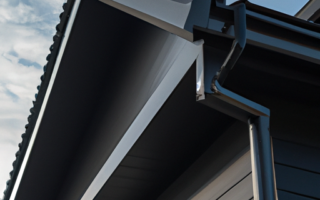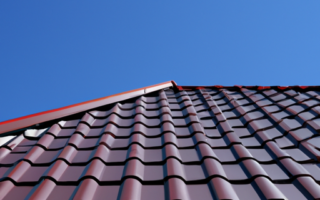An Overview of Roof Construction: Understanding Different Types and Styles
The roof is an essential component of any building structure. It not only provides protection from the elements but also plays a vital role in the overall aesthetic appeal. When it comes to roof construction, there are various types and styles to choose from, each with its own unique characteristics and benefits. In this comprehensive guide, we will provide an overview of roof construction, specifically focusing on the understanding of different types and styles.
One of the most common types of roof construction is the pitched or sloped roof. This style is characterized by its steep slope, allowing water and debris to easily slide off the surface. Pitched roofs are popular in areas with heavy rainfall or snowfall, as they provide excellent water drainage and prevent the accumulation of snow. They are also highly durable and can withstand strong winds.
Another type of roof construction is the flat roof. As the name suggests, this style features a nearly flat surface with a slight slope for water drainage. Flat roofs are commonly used in commercial and industrial buildings, as they provide a practical space for rooftop installations such as HVAC systems or solar panels. However, proper waterproofing is essential for flat roofs to prevent water leakage and pooling.
Gable roofs are another popular choice in roof construction. They feature two sloping sides that meet at a ridge, creating a triangular-shaped gable at each end. Gable roofs are not only aesthetically pleasing but also offer excellent ventilation and ample attic space. However, these roofs may be prone to wind damage if not properly braced, and the gable ends can also be vulnerable to leaking.
Hip roofs are similar to gable roofs but have all sides sloping downwards to the walls of the building. This design offers increased stability and allows for better resistance against strong winds. Hip roofs are commonly found on traditional residential homes and provide a classic architectural look. They also offer excellent drainage and are suitable for areas with high rainfall.
A combination of different roof styles, known as a mansard roof, is another option in roof construction. Mansard roofs have two slopes on all four sides, with the lower slope being steeper than the upper slope. This design provides additional living space in the form of an attic or extra rooms, making it a popular choice for multi-story buildings.
In conclusion, understanding the different types and styles of roof construction is crucial when planning a new building or renovating an existing one. Each type has its own advantages and considerations, including water drainage, wind resistance, and architectural appeal. By carefully selecting the appropriate roof construction, you can ensure the longevity, durability, and aesthetic appeal of your building.
Exploring Roofing Materials: From Shingles to Tiles and Metal
When it comes to roof construction, one of the most critical aspects to consider is the choice of roofing materials. The type of material you choose will not only affect the look of your roof but also its durability, longevity, and ability to withstand harsh weather conditions. In this comprehensive guide, we will explore the various roofing materials available on the market, from traditional shingles and tiles to modern metal options.
1. Shingles
Shingles are perhaps the most commonly used roofing material. They are available in different types, including asphalt, wood, and composite shingles. Asphalt shingles are the most affordable option and are known for their durability and easy installation. Wood shingles, often made from cedar or redwood, offer a natural and rustic appearance. Composite shingles, on the other hand, are a synthetic alternative that mimics the look of other materials while offering enhanced durability.
2. Tiles
Roofing tiles have been around for centuries and are known for their timeless beauty. Clay tiles are a popular choice due to their durability, fire resistance, and high aesthetic appeal. Concrete tiles, on the other hand, are a more affordable alternative that offers similar benefits. Both types of tiles come in a variety of shapes, sizes, and colors, allowing homeowners to choose a style that complements their architectural design.
3. Metal
Metal roofs have gained popularity in recent years due to their sleek, modern aesthetic and exceptional durability. They are available in various materials, including steel, aluminum, and copper. Metal roofs are known for their longevity, often lasting more than 50 years. They are also lightweight, making them a suitable option for both residential and commercial buildings. Additionally, metal roofs are eco-friendly, as they can be recycled at the end of their lifecycle.
4. Slate
If you’re looking for a roofing material that exudes elegance and sophistication, slate is an excellent choice. It is a natural stone that offers timeless beauty and unmatched durability. Slate roofs can last for over a century and are resistant to fire, mold, and pests. However, due to its weight and high cost, slate is not suitable for all structures and may require additional support.
5. Synthetic Materials
In addition to the traditional roofing materials mentioned above, there are also synthetic options available. These materials are designed to mimic the look and texture of natural materials while providing improved durability and cost-effectiveness. Synthetic roofing materials include rubber, polymer, and plastic-based products that can withstand extreme weather conditions and require minimal maintenance.
When selecting roofing materials, it’s crucial to consider the climate, architectural style, budget, and personal preferences. Consulting with a professional roofing contractor can help you make an informed decision and ensure that your roof not only looks great but also provides the necessary protection for years to come.
Essential Techniques for Proper Roof Installation and Maintenance
When it comes to roof construction, it’s not just about choosing the right materials and type of roof. Proper installation and maintenance techniques are equally important to ensure the longevity and functionality of your roof. In this comprehensive guide, we will explore the essential techniques for proper roof installation and maintenance.
1. Proper Ventilation: One of the most critical aspects of roof installation is ensuring proper ventilation. Proper ventilation helps prevent the build-up of moisture and heat in the attic space, which can lead to mold growth, damage to the roof structure, and higher energy costs.
2. Flashing Installation: Proper installation of flashing is essential for preventing water leaks. Flashing is installed around roof penetrations, such as chimneys, vents, and skylights, to redirect water away from vulnerable areas. Use high-quality flashing materials and ensure they are properly sealed to avoid water infiltration.
3. Roof Underlayment: The roof underlayment acts as a secondary barrier against water penetration and helps protect the roof deck. Install a high-quality underlayment that is suitable for the specific type of roof and climate conditions. Properly overlap the underlayment sheets to ensure full coverage.
4. Shingle Installation: Whether you choose asphalt, metal, or other shingle types, proper installation is crucial for their performance. Follow the manufacturer’s guidelines for installation, including proper nailing techniques and securing the shingles to prevent wind uplift. Regularly inspect for damaged or missing shingles and replace them promptly.
5. Regular Inspections and Maintenance: Regular inspections and maintenance are vital for identifying potential issues early on and preventing costly repairs. Inspect your roof at least twice a year, in the spring and fall, or after severe weather events. Look for signs of damage, such as loose shingles, cracked caulking, or sagging areas, and address them promptly.
6. Gutter Cleaning: Proper roof maintenance includes keeping your gutters clean and free from debris. Clogged gutters can lead to water backup, which can damage the roof, fascia, and even the foundation of your home. Regularly clean your gutters and consider installing gutter guards to prevent debris accumulation.
7. Professional Roof Inspections: While regular inspections are essential, it’s also advisable to have a professional roof inspection every few years or after major storms. A professional inspector can identify hidden issues and provide expert advice on any necessary repairs or maintenance.
By implementing these essential techniques for proper roof installation and maintenance, you can ensure the longevity, durability, and functionality of your roof. Don’t neglect this crucial aspect of roof construction, as it can save you time, money, and headaches in the long run.
Factors to Consider in Roof Construction: Cost, Durability, and Energy Efficiency
When it comes to roof construction, there are several factors to consider, including cost, durability, and energy efficiency. These aspects play a crucial role in determining the type of roof, materials used, and construction techniques employed.
Cost is often a primary concern for homeowners and builders alike. The expenses associated with roof construction include materials, labor, and maintenance costs. Different types of roofs (such as flat, pitched, or hipped) and materials (such as asphalt shingles, metal, or tile) have varying costs. For example, asphalt shingles tend to be more cost-effective compared to metal or tile roofs.
Durability is another critical factor to consider in roof construction. A durable roof can withstand harsh weather conditions, such as heavy rain, strong winds, snow, or extreme heat. Factors such as the quality of materials used and construction techniques employed contribute to the overall durability of the roof. Metal roofs, for instance, are known for their longevity and resistance to damage, making them a popular choice for areas prone to severe weather.
Energy efficiency is becoming increasingly important in roof construction. A well-insulated and energy-efficient roof can help reduce heating and cooling costs in a building. By preventing heat transfer, an energy-efficient roof keeps the interior space cooler in hot weather and warmer during colder months. Green roofs, which are covered with vegetation, are an excellent option for enhancing energy efficiency as they provide natural insulation and reduce urban heat island effects.
Considering these factors is crucial in making informed decisions about roof construction. By evaluating the cost, durability, and energy efficiency, homeowners and builders can choose the most suitable roof type, materials, and techniques that align with their needs, budget, and environmental considerations.



